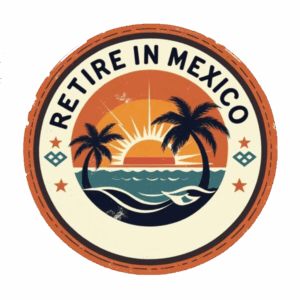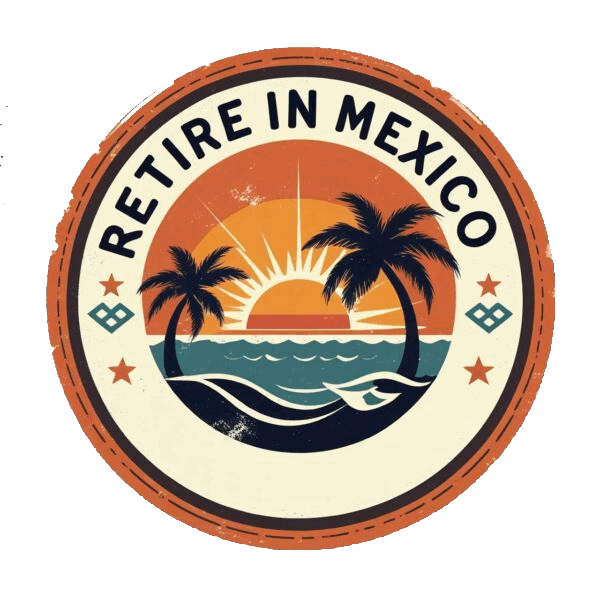
You wake up to sunshine. You walk to a café that charges $2 for a flat white. You’re surrounded by color, music, warmth—and most of all, freedom. Sounds like a dream? It’s not. It’s Mexico.
And right now, thousands of American and Canadian retirees are quietly making the move—not for a vacation, but for a completely new life.
But what does it really take to retire in Mexico? What’s the catch nobody talks about? And is it true that your money stretches 3–4 times further here?
Let’s break it all down—step by step.
Why Retiring in Mexico is More Than Margaritas and Mariachi
The biggest misconception? That Mexico is just for tacos and tourists. In reality, it’s becoming one of the best places to retire in 2025 if you know what you’re doing.
From high-tech metropolises to sleepy surf towns, Mexico has something for every lifestyle:
Mexico City: Culture, tech, and urban energy
Puerto Escondido: A surf town where time slows down
San Miguel de Allende: Colonial beauty with a vibrant expat community
Ajijic (Lake Chapala): Popular among retirees for its temperate weather
Mérida: The safest city in Latin America with deep cultural roots
Visual Suggestion: Insert drone footage or image of Mexico City skyline with alt text: “Retire in Mexico City: Culture and Cosmopolitan Living”
How Far Your Money Goes: Cost of Living in Mexico vs. the US
Let’s talk numbers.
| Expense | New York City | Mexico City |
|---|---|---|
| Rent (1BR Apt) | $3,500/month | $700/month |
| Weekly Groceries | $80 | $20 |
| Doctor’s Visit | $150 | $25 |
| Flat White Coffee | $5.50 | $2 |
Living in Mexico isn’t just cheaper—it can be better:
Fresh organic produce
Year-round sunshine
Access to affordable private healthcare
Based on our 10+ years helping expats relocate, we’ve seen clients reduce their monthly expenses by up to 60% without compromising lifestyle.
Visual Suggestion: Insert photo of a local farmer’s market with alt text: “Affordable organic groceries in Mexico”
Step 1: Choosing Where to Live in Mexico
Here’s the truth: Mexico isn’t one-size-fits-all.
Choosing the right city is the single most important decision you’ll make. Let’s break down four lifestyle options:
Mexico City
Urban, fast-paced, high energy
Ideal for professionals or city lovers
Higher cost of living but endless amenities
Mérida
Safest city in Latin America
Colonial charm, family-friendly
Super hot climate, slower pace
Oaxaca City
Artsy, culturally rich, budget-friendly
Ideal for those seeking authenticity
Puerto Escondido
Surf town with off-grid appeal
Laid-back, minimal infrastructure
Ideal for digital nomads or adventurers
Explore our relocation services in Mexico
Step 2: Visa Options for Retiring in Mexico
Understanding Mexican immigration laws is crucial. Here are the main visas you should know:
1. Tourist Visa (FMM)
Valid for up to 180 days
No work allowed
Not a long-term solution
2. Temporary Resident Visa
Valid for 1–4 years
Requires proof of monthly income (~$2,600 USD) or savings
You must apply at a Mexican consulate outside Mexico
3. Permanent Resident Visa
No expiration
Typically requires 4 years of temporary residency or family ties
Important Tip: Start your application early. Visa processing requires both foreign consulate approval and local Mexican immigration finalization.
Official Government Visa Info – Mexican Consulates Abroad
Step 3: How to Find the Right Home (And Avoid the Housing Trap)
Too many expats overpay for rent by using Airbnb long-term.
Here’s what we recommend:
Use local platforms like Inmuebles24 or Facebook Marketplace
Walk the neighborhoods before committing
Negotiate—it’s expected!
Start with short-term housing, then look for long-term rentals
Typical Rental Prices in 2025:
Local market 2BR: $400–$600/month
Tourist-facing listings: $1,200+
Internal Link Suggestion: Contact us to help with housing and relocation
Step 4: Healthcare Options for Expats in Mexico
Mexico’s healthcare system consistently surprises new retirees with its affordability and quality.
Public System (IMSS)
Low-cost ($500/year approx.)
Slower services
Limited English support
Private System
$25 doctor visits
International hospitals with English-speaking staff
Private insurance is affordable compared to U.S. plans
Bonus Tip: Many retirees combine both public and private options for full coverage.
Step 5: Cultural Adaptation and Common Mistakes to Avoid
Even with your housing and visa sorted, success depends on how well you integrate.
Here are the most common mistakes retirees make:
Relying on English: Learn basic Spanish. It helps immensely.
Staying in the expat bubble: Make local friends. Embrace the culture.
Expecting U.S./Canada service standards: Mexico runs on a slower, more personal rhythm.
Cultural Keyword: Tranquilidad — the peace and calm you’ll feel in day-to-day Mexican life.
The Emotional Truth: What Changes When You Actually Retire in Mexico
Nobody talks about the emotional shift.
You slow down. You breathe. You connect. You begin to question why stress was ever normal.
Retiring in Mexico gives you:
Freedom from the 9–5 rat race
Deeper human connections
A healthier lifestyle
But remember: Mexico won’t magically fix everything. It will challenge you to grow. And that’s where the magic happens.
Final Thoughts: Is Retiring in Mexico Right for You?
If everything you want—freedom, beauty, simplicity—is just one move away, what’s stopping you?
Primary Keyword Used: Retire in Mexico
Based on our firsthand experience helping hundreds of North Americans relocate to Mexico, we believe that if done right, this can be the best decision of your life.
Ready to start your retirement journey in Mexico? Contact our expert team today to schedule a free consultation.
Frequently Asked Questions (FAQs)
Is retiring in Mexico safe for Americans and Canadians?
Yes. Many cities like Mérida, San Miguel de Allende, and Ajijic are known for their safety and large expat communities.
Can I buy property in Mexico as a foreigner?
Yes. Foreigners can own property, especially through a “fideicomiso” trust system for coastal areas.
Do I need to be fluent in Spanish to retire in Mexico?
No, but basic Spanish helps a lot with daily tasks and connecting with locals.
How much money do I need to retire in Mexico?
It depends on your lifestyle, but many retirees live comfortably on $1,800–$2,500/month.
What are the best beach towns in Mexico for retirees?
Puerto Vallarta, Mazatlán, Playa del Carmen, and Puerto Escondido top the list in 2025.

